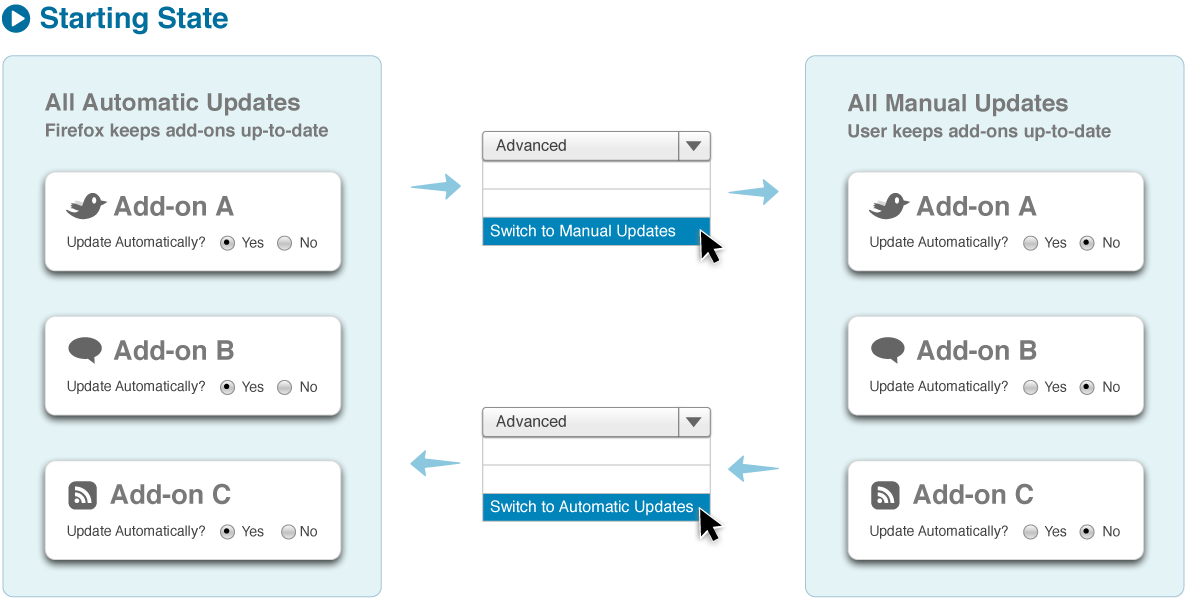I’d like to highlight the awesome research project that intern Lilian Weng is leading around Firefox’s new tab page.
While our goal is to make users more efficient at their browsing tasks, what makes them more efficient is a question we keep returning to. Most other browsers display links on new tab pages based on frecency. Frecency is a portmanteau which combines frequency and recency. At Mozilla, we use it to refer to sites that users have been to often, recently, or both. It’s how we calculate what should be the first, second, third, etc site that appears when you type a letter into Firefox’s URL bar.
Using frecency to list links on a new tab page seems an obvious design direction, but we want to truly investigate whether another solution would be best for users. So, Lilian is spinning up a brave new study. Once her test is ready, users of Test Pilot, our platform for collecting structured feedback on Firefox, will be asked if they’d like to participate in a new study. If they say yes, they will be randomly assigned one of six new designs on their new, blank Firefox tabs. One of these six designs will be our control group: a blank white tab, just as Firefox users see currently. The other five will look almost identical to each other. They will display a simple 8×8 grid of favicons set on a button which is colored to highlight them based on a color-matching algorithm designed by Margaret Leibovic:
The only variable that will be changing among the five designs is which sites are displayed in this grid. Here’s the five variations we’re testing:
- Frecency. A combination of a user’s most frequently and most recently visited sites.
- Most recently bookmarked sites. By displaying prominently what a user has recently starred, we effectively turn the new tab page into a read it later list.
- Most recently closed sites. This could lead users to treat new tab page as an undo feature, or close tabs in order to temporarily store them in the new tab page as a short-term read it later list.
- Sites based on content similarity. Intern Abhinav Sharma is trying out his project, called Predictive Newtabs, which displays sites based on where the user has opened a new tab from. For instance, if the user has been browsing a news site, a new tab would offer other news sites the user has been to.
- Sites based on groups of sites frequently visited together. In another part of Abhinav’s Predictive Newtabs experiments, he has designed an algorithm to predict sites to show based on sites users visit in groups. For instance, if every time you get to work you first check the weather and then check stock prices, this new tab would offer you a stock page on a new tab after you checked the weather. If you want to try this experiment out yourself, you can download the Jetpack here.
The above study is still in preparation, and once it goes live I predict that we’ll learn tons of valuable information about how new tab suggestions can positively impact users. Lilian will be collecting data on many aspects of users’ responses to these designs, such as how they effect the breadth of sites users visit, how likely they are to click on each item in the grid, and how long they spend deciding where to navigate. I can’t wait to start pouring over the data that comes back: it’s very new research in an area that has a profound impact on how we use the web.





Recent Comments